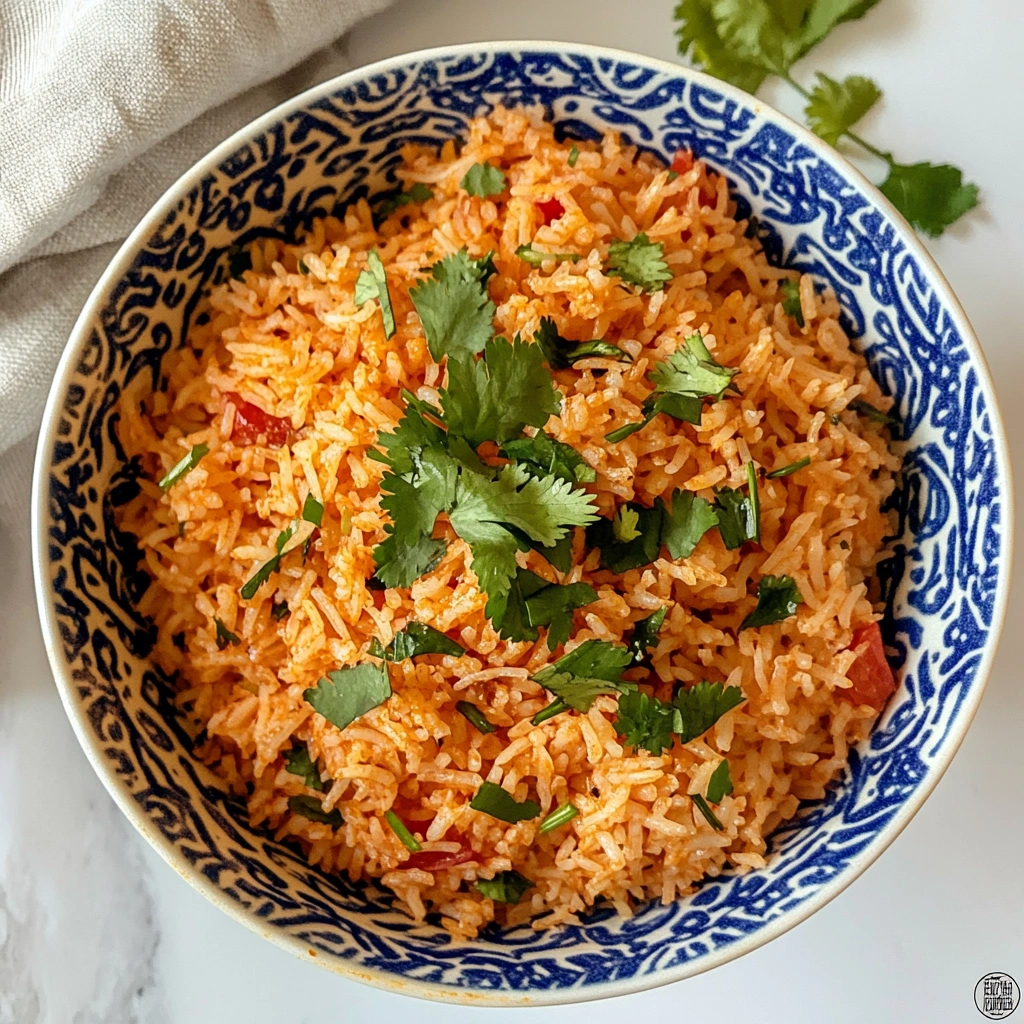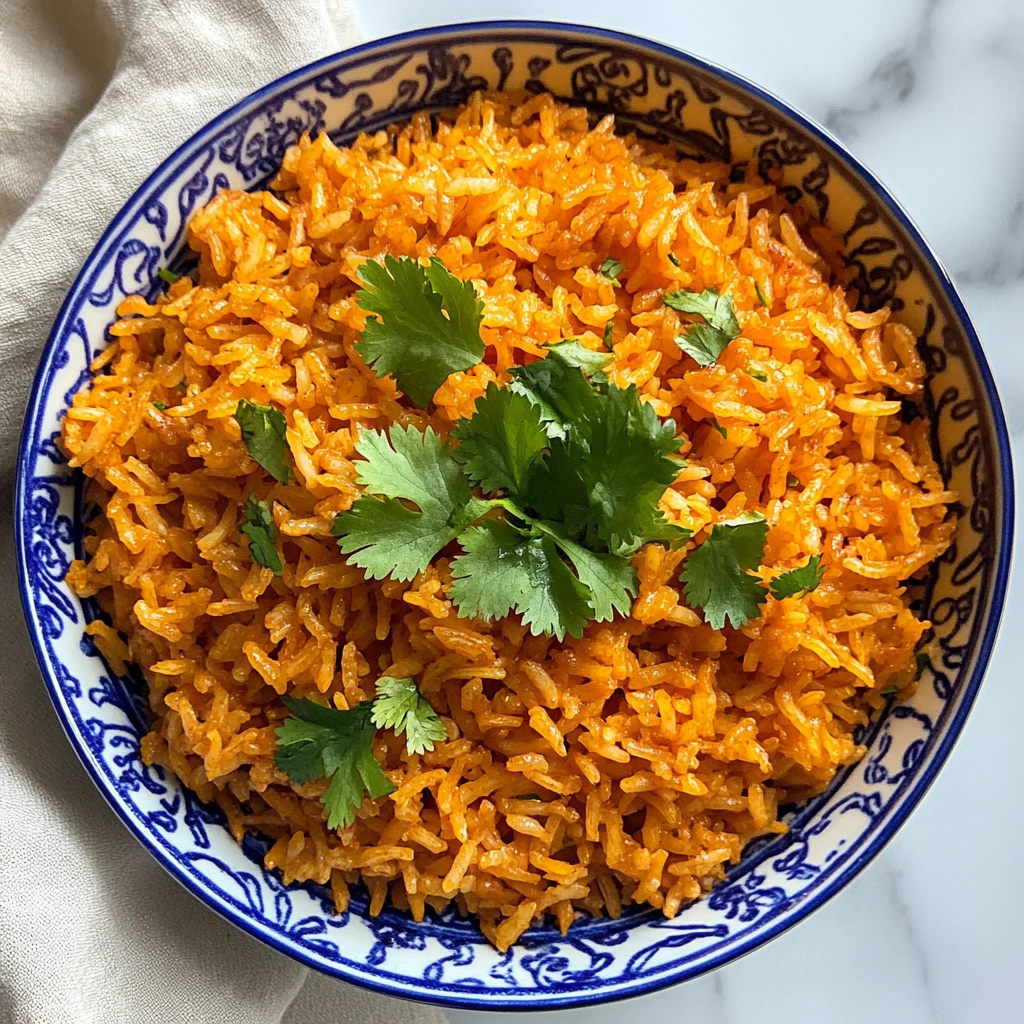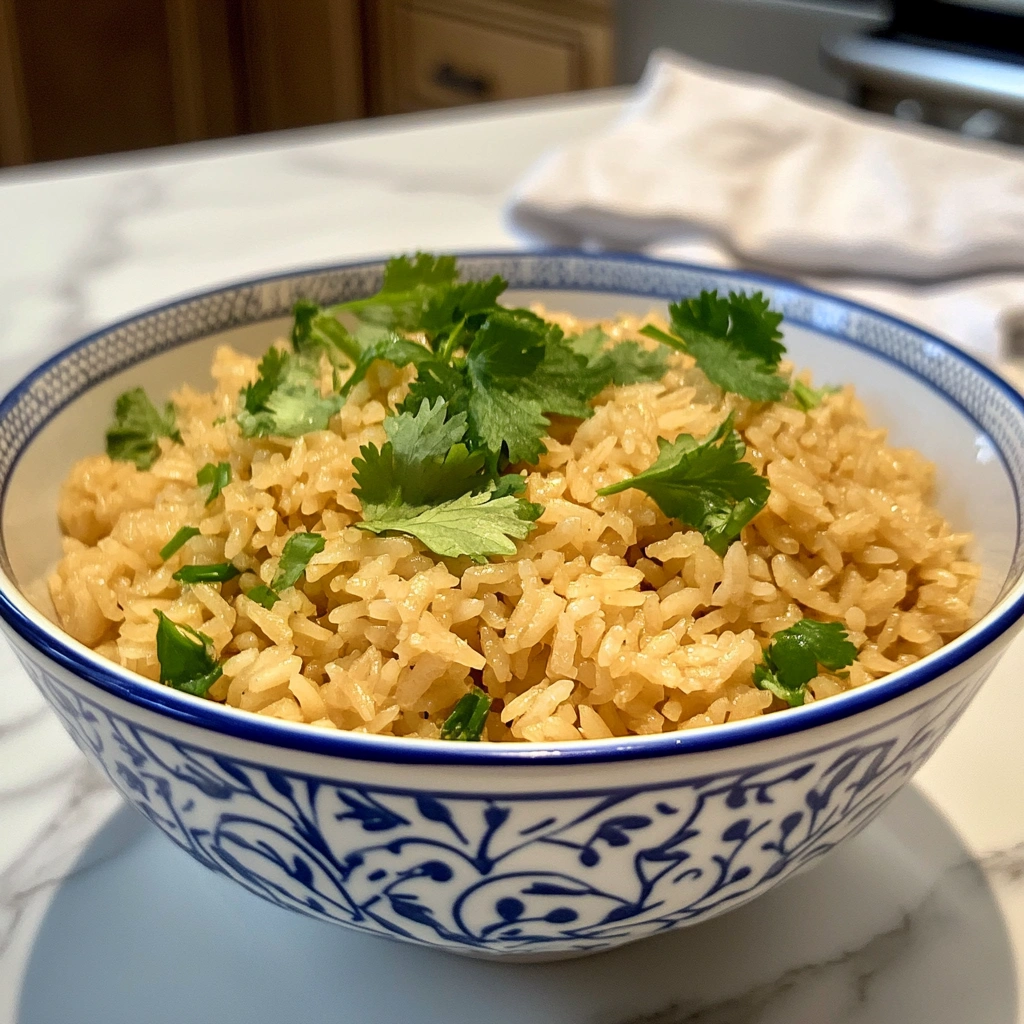Introduction
What is Yellow Rice Made Of?
Yellow rice is a popular dish, cherished for its vibrant color and fragrant aroma. Typically, cooks make it by combining white rice with spices that add a golden color and rich flavor. The most common ingredients responsible for this color are turmeric and saffron. These spices not only color the rice but also provide earthy and floral notes. Flavor enhancers such as garlic, onions, and chicken broth add a savory depth to the dish.
Yellow rice appears in many global cuisines, such as Spanish, Caribbean, Indonesian, and Indian cooking. By understanding its ingredients, you can explore a variety of exciting recipes and variations from around the world.
Origins and Cultural Significance
Although its exact origin is unclear, people in rice-eating regions often prepare it. Let’s explore some areas where yellow rice holds cultural importance.
Spain:
In Spanish cuisine, yellow rice is an essential component in traditional dishes like Arroz Amarillo and paella. Traditionally, these dishes use saffron to add a golden color and distinct flavor. Notably, the Moors introduced saffron to Spain, and it has remained a favorite spice ever since. Discover more about Spanish rice dishes in this guide to The Ultimate Rice Recipes.
Caribbean:
In Caribbean cuisine, it is made with turmeric and often includes ingredients like peas, carrots, or bell peppers. Consequently, this dish pairs beautifully with stews, grilled meats, or fried plantains. Furthermore, each island adds its own twist, reflecting local tastes and available ingredients.
India:
Indian yellow rice, also known as “Pulao” or “Biryani Rice,” gets its color from turmeric. People value turmeric not only for its color but also for its health benefits. Additionally, Indian versions frequently include spices like cloves, cinnamon, and cardamom, which give the dish a rich flavor.
Indonesia:
In Indonesia, people enjoy Nasi Kuning (yellow rice) during celebrations. This dish combines coconut milk, turmeric, and herbs, resulting in a creamy texture and bold flavor. As a result, it is often served at festivals and special events.
Clearly, yellow rice’s adaptability makes it special. While the core ingredients remain the same, each region adds its own unique flavors and methods.
Key Ingredients in Yellow Rice
Main Ingredients
Yellow rice uses a few basic ingredients. Let’s take a closer look at what goes into making it.
- White Rice:
The type of rice you choose can affect the texture and flavor. For example:- Long-Grain Rice: This variety stays fluffy when cooked.
- Basmati Rice: Known for its pleasant aroma, it is commonly used in Indian and Middle Eastern dishes.
- Jasmine Rice: This type offers a light floral scent, making it popular in Southeast Asian meals.
- Coloring Agents:
The vibrant yellow color comes from natural spices, mainly:- Turmeric:
- This bright yellow spice comes from the Curcuma longa plant.
- It has a mild, earthy flavor and offers several health benefits, such as reducing inflammation.
- Saffron:
- Saffron threads come from the Crocus sativus flower.
- This spice adds a deep golden color and a soft floral taste. Because saffron is hard to harvest, it tends to be more expensive than other spices.
- Turmeric:
- Flavor Boosters:
To make yellow rice taste even better, cooks often add:- Garlic: Provides a rich, savory taste.
- Onions: When sautéed, onions add sweetness and depth.
- Chicken Broth: This ingredient enriches the rice, making it more aromatic and flavorful.
Coloring Agents
The yellow color of this dish comes from two main spices: turmeric and saffron. Each spice contributes something unique to the dish.
Turmeric – The Affordable Option
Turmeric is the easiest and most affordable way to color yellow rice. Because of its mild, slightly bitter flavor, it works well in many recipes. Moreover, turmeric offers health benefits, including anti-inflammatory and antioxidant properties.
- How to Use:
Adding about ½ teaspoon of turmeric per cup of rice usually gives a bright yellow color.
Saffron – The Luxury Choice
Saffron adds a richer flavor and a deeper color. To get the best results, soak the threads in warm water or milk before cooking. This method helps spread the color and flavor evenly.
- How to Use:
Crush a few saffron strands and soak them in 2 tablespoons of warm water or milk for 15 minutes. Then, add the liquid to the rice during cooking.
Flavoring Ingredients
While turmeric and saffron provide the color, other ingredients give yellow rice its delicious taste. Let’s explore some key elements:
- Garlic and Onions:
Sautéing garlic and onions in oil or butter before adding the rice creates a rich, savory base. As a result, the dish develops more complex flavors. - Salt and Pepper:
These basic seasonings help balance and enhance the other flavors. - Herbs and Garnishes:
- Cilantro or Parsley: Fresh herbs add a bright, green contrast to the yellow rice.
- Bay Leaves: When cooked with the rice, bay leaves infuse it with a subtle herbal note.
By combining these ingredients, you can create a dish that is both flavorful and visually appealing.
How to Prepare Yellow Rice

Step-by-Step Recipe
Here’s an easy and delicious yellow rice recipe that you can prepare at home. This recipe serves 4 people and uses common ingredients to achieve a beautiful yellow color and rich taste.
Ingredients:
- 1 cup of long-grain white rice, like jasmine or basmati.
- 2 cups chicken broth or water
- ½ teaspoon ground turmeric
- 2 tablespoons olive oil or butter
- 1 small onion, finely chopped
- 2 garlic cloves, minced
- 1 bay leaf (optional)
- Salt and pepper to taste
- Fresh cilantro or parsley, chopped (for garnish)
Instructions:
- Rinse the Rice:
First, place the rice in a fine-mesh strainer. Rinse the rice under cold water until the water is no longer cloudy. This step helps remove excess starch, preventing clumping during cooking. - Sauté Aromatics:
Next, in a medium saucepan, heat the olive oil or butter over medium heat. Add the chopped onions and sauté for about 3 minutes until they soften. Then, add the minced garlic and cook for another minute until it becomes fragrant. - Add Turmeric and Rice:
Sprinkle the turmeric over the onions and garlic. Stir well to combine the ingredients. After that, add the rinsed rice to the pan and stir for 1-2 minutes, ensuring the grains are well-coated with the turmeric mixture. - Add Liquid and Seasoning:
Pour in the chicken broth or water, and add the bay leaf if using. Season with salt and pepper to taste. Stir everything together and bring the mixture to a boil. - Simmer the Rice:
After the mixture comes to a boil, lower the heat to a simmer. Cover the saucepan with a tight-fitting lid and let the rice simmer for 15-20 minutes. Try to avoid lifting the lid during this time to retain steam. - Rest and Fluff:
After cooking, remove the pan from the heat and let it sit, covered, for 5 minutes. Finally, remove the lid, discard the bay leaf, and fluff the rice with a fork. - Garnish and Serve:
Sprinkle with chopped cilantro or parsley before serving for an extra burst of freshness.
Methods to Cook Yellow Rice
There are several convenient ways to prepare yellow rice. Here are two commonly used methods:
- Stovetop Method
- Follow the detailed recipe above for stovetop preparation.
- This method allows for precise control over heat and texture.
- It’s perfect if you enjoy a traditional approach to cooking rice.
- Rice Cooker Method
- Rinse the Rice: Wash the rice thoroughly until the water runs clear.
- Prepare the Mixture: In the rice cooker bowl, add 1 cup of rinsed rice, 2 cups of chicken broth, ½ teaspoon of turmeric, sautéed onions, garlic, salt, and pepper. Stir everything together.
- Cook the Rice: Close the rice cooker lid and turn it on. Let it cook until it automatically switches to the “Warm” setting.
- Fluff and Garnish: Once done, fluff the rice with a fork and garnish with fresh herbs.
The rice cooker method is ideal for busy days because it requires minimal attention.
Tips for Perfectly Cooked Yellow Rice
Achieving the perfect texture for yellow rice requires attention to detail. Here are some helpful tips:
- Use the Right Water-to-Rice Ratio:
Generally, a 2:1 ratio of liquid to rice works best. This ratio ensures the rice cooks evenly and stays fluffy. - Avoid Lifting the Lid:
Keep the lid closed during cooking. This traps steam, which helps the rice cook properly. - Let the Rice Rest:
After cooking, allow the rice to sit for at least 5 minutes. This resting period helps the grains firm up, making fluffing easier. - Prevent Clumping:
Wash the rice thoroughly before cooking to eliminate excess starch. This step helps avoid sticky or clumpy rice. - Don’t Over-Stir:
Stirring too much while the rice cooks can break the grains, resulting in a mushy texture.
These tips and methods ensure that your yellow rice turns out perfectly every time. By paying attention to each step, you’ll enjoy a dish that is both flavorful and visually appealing.


